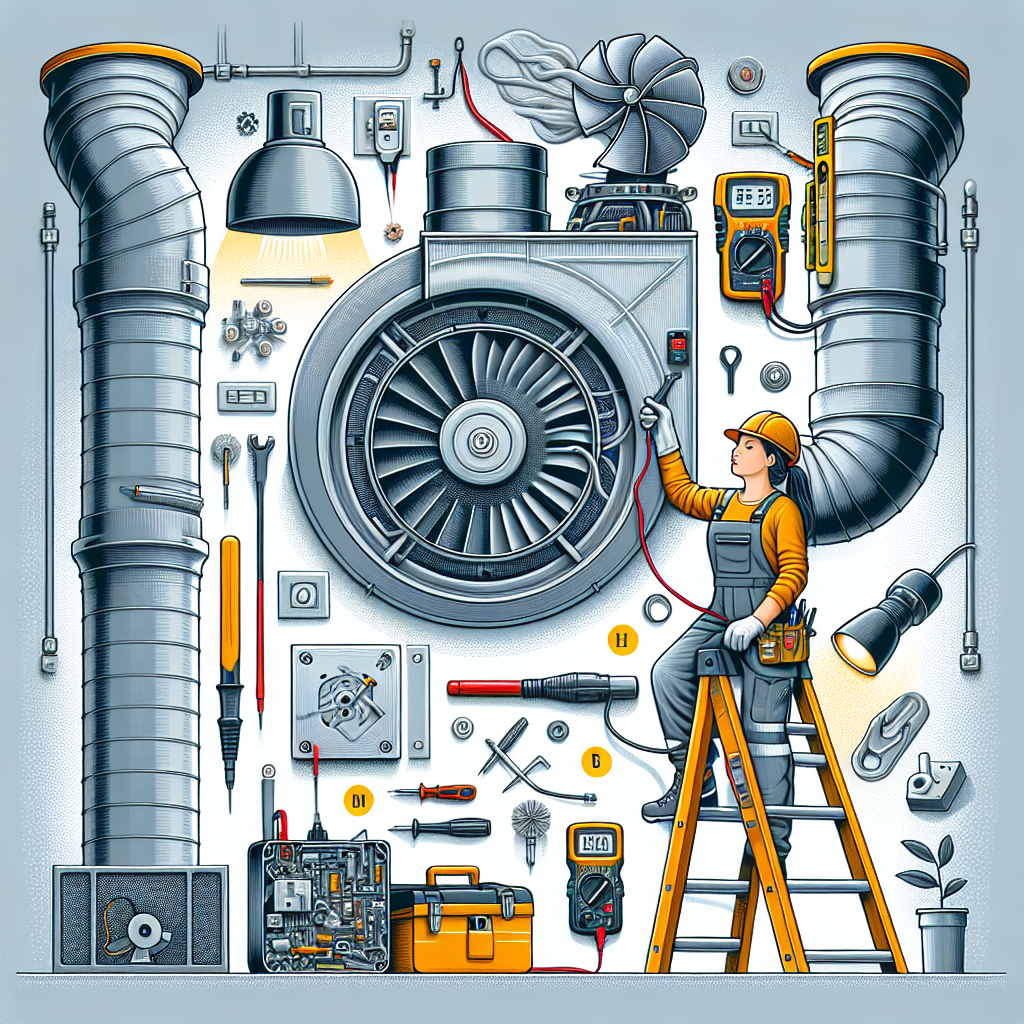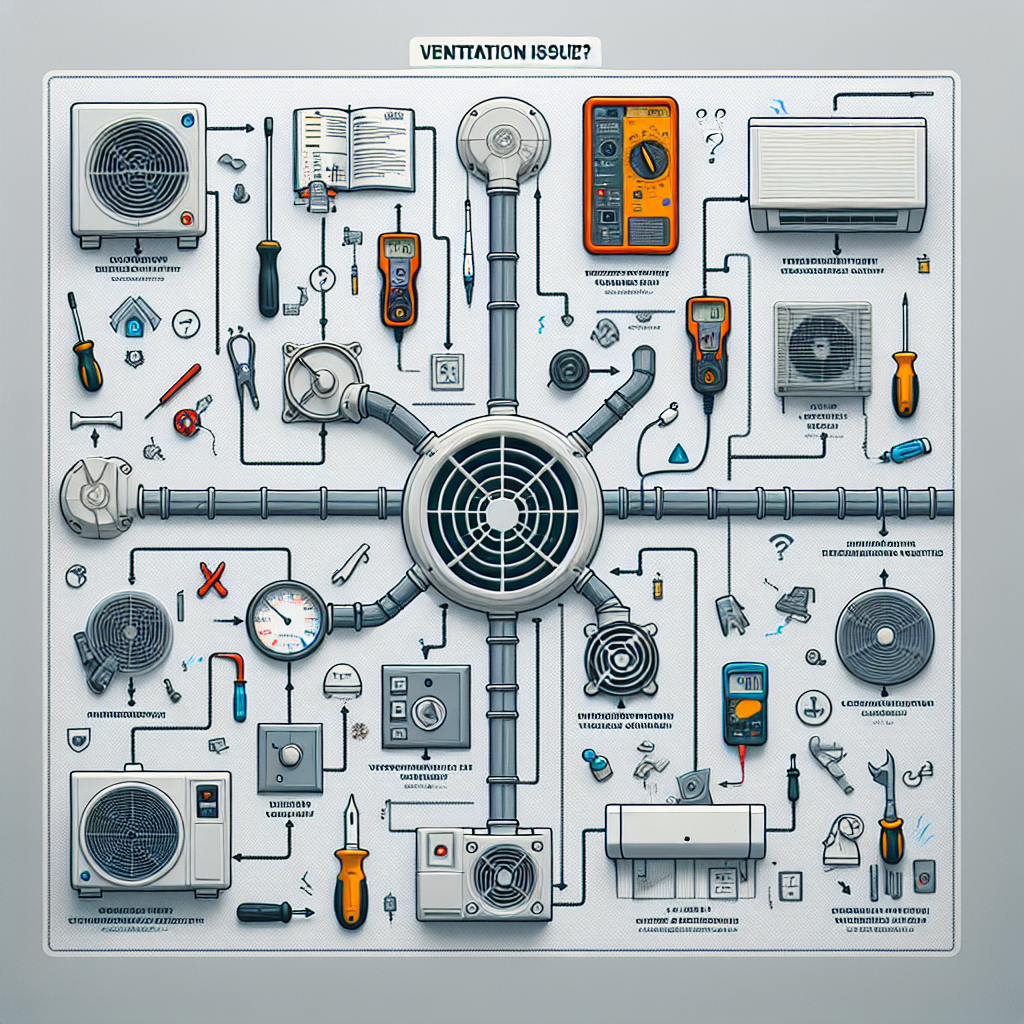Bathroom Ventilation System Troubleshooting: A Comprehensive Guide

Having a properly functioning bathroom ventilation system is crucial for maintaining good indoor air quality and preventing issues such as mold and mildew growth. However, like any mechanical system, bathroom ventilation systems can encounter problems over time. In this article, we will explore common issues that can arise with bathroom ventilation systems and provide troubleshooting tips to help you resolve them.
Common Problems with Bathroom Ventilation Systems
Before we delve into troubleshooting techniques, let’s first familiarize ourselves with some of the most common problems that can occur with bathroom ventilation systems:
- Noisy operation: If your bathroom ventilation system is making excessive noise, it could be due to a loose fan blade, worn-out motor bearings, or a buildup of debris in the fan housing.
- Inadequate airflow: If you notice that your bathroom is not adequately ventilated, it could be due to a clogged or dirty air intake grille, a blocked exhaust duct, or an undersized fan.
- Excessive moisture: If you’re experiencing excessive moisture in your bathroom, it could be a sign of poor ventilation. This can lead to mold and mildew growth, which can cause health issues and damage to your bathroom surfaces.
- Unpleasant odors: If your bathroom ventilation system is not effectively removing odors, it could be due to a clogged or dirty filter, a malfunctioning fan, or an improperly installed duct system.
- Intermittent operation: If your bathroom ventilation system turns on and off randomly, it could be due to a faulty switch, a loose electrical connection, or a malfunctioning motor.
Troubleshooting Techniques
Now that we have identified some common problems, let’s explore troubleshooting techniques to help you resolve these issues:
1. Noisy Operation
If your bathroom ventilation system is making excessive noise, follow these steps to troubleshoot the issue:
- Turn off the power to the ventilation system to ensure your safety.
- Inspect the fan blades for any signs of damage or looseness. Tighten any loose screws or replace damaged blades.
- Check the motor bearings for wear and tear. If they are worn out, consider replacing the motor.
- Clean the fan housing and remove any debris that may be causing the noise.
- If the noise persists, it may be time to replace the entire fan unit.
2. Inadequate Airflow
If your bathroom ventilation system is not providing sufficient airflow, try the following troubleshooting steps:
- Inspect the air intake grille and clean it if it is clogged or dirty.
- Check the exhaust duct for any obstructions such as bird nests or debris. Clear any blockages that you find.
- Ensure that the fan is properly sized for your bathroom. If it is undersized, consider upgrading to a more powerful fan.
- If the problem persists, it may be necessary to consult a professional to assess the overall ventilation system design.
3. Excessive Moisture
To address excessive moisture in your bathroom, follow these troubleshooting steps:
- Check if the exhaust duct is properly connected and vented to the outside. Ensure that there are no leaks or gaps in the ductwork.
- Inspect the exhaust fan for any signs of malfunction. If the fan is not running or is running at a slow speed, it may need to be replaced.
- Consider installing a dehumidistat switch that automatically activates the ventilation system when humidity levels rise above a certain threshold.
- Regularly clean and maintain your bathroom surfaces to prevent mold and mildew growth.
4. Unpleasant Odors
If your bathroom ventilation system is not effectively removing odors, try the following troubleshooting steps:
- Check if the filter is clogged or dirty. Clean or replace the filter as necessary.
- Inspect the fan blades for any buildup of dirt or debris. Clean the blades to ensure optimal airflow.
- Ensure that the duct system is properly installed and sealed to prevent odors from escaping into other areas of your home.
- If the problem persists, it may be necessary to upgrade to a more powerful fan or consult a professional for further assistance.
5. Intermittent Operation
If your bathroom ventilation system turns on and off randomly, try the following troubleshooting steps:
- Check the switch for any loose connections. Tighten any loose wires or replace the switch if necessary.
- Inspect the electrical connections to ensure they are secure and free from corrosion.
- If the motor is malfunctioning, consider replacing it to resolve the intermittent operation issue.
- Consult a professional if the problem persists, as it may be indicative of a more complex electrical issue.
Frequently Asked Questions about Bathroom Ventilation System Troubleshooting
1. How often should I clean my bathroom ventilation system?
It is recommended to clean your bathroom ventilation system at least once every six months. Regular cleaning helps maintain optimal performance and prevents the buildup of dirt and debris that can impede airflow.
2. Can I install a bathroom ventilation system myself?
While it is possible to install a bathroom ventilation system yourself, it is recommended to hire a professional for proper installation. A professional can ensure that the system is correctly sized, vented, and wired to meet local building codes and regulations.
3. How can I determine the appropriate size of a bathroom ventilation fan?
The size of a bathroom ventilation fan is determined by the volume of the bathroom. To calculate the required airflow, multiply the length, width, and height of the bathroom in feet, and then multiply the result by the recommended air changes per hour (ACH) for bathrooms, which is typically 8-10 ACH.
4. What are the benefits of a bathroom ventilation system?
A properly functioning bathroom ventilation system offers several benefits, including:
- Improved indoor air quality by removing excess moisture, odors, and pollutants.
- Prevention of mold and mildew growth, which can cause health issues and damage to bathroom surfaces.
- Reduced condensation on mirrors, windows, and other bathroom fixtures.
- Enhanced comfort by maintaining a fresh and clean bathroom environment.
5. How long do bathroom ventilation systems typically last?
The lifespan of a bathroom ventilation system can vary depending on factors such as usage, maintenance, and quality of the system. On average, a well-maintained bathroom ventilation system can last between 10 to 15 years. However, components such as fans and motors may need to be replaced sooner if they encounter issues.
Summary
A properly functioning bathroom ventilation system is essential for maintaining good indoor air quality and preventing issues such as mold and mildew growth. By understanding common problems and following troubleshooting techniques, you can address issues with your bathroom ventilation system effectively. Regular maintenance and cleaning are key to ensuring optimal performance and longevity of the system. If you encounter complex issues or are unsure about troubleshooting techniques, it is always advisable to consult a professional for assistance.
For professional assistance with bathroom ventilation system troubleshooting and installation, North Bay Contractors can provide expert guidance and services to meet your needs.

